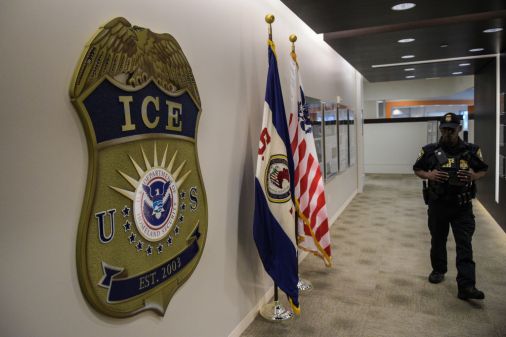Fed panel: Lots of policy work needed on body-worn cameras
While the nation considers how to re-establish trust between law enforcement and minority communities, some suggest that body-worn cameras mounted on police would be a good first step.
However, a number of federal technology officials expressed the need for a slow integration of body-worn cameras due to the broad privacy implications and the lack of statues regarding data management.
“Cameras are great, the tech is there, that’s not the issue,” Wolf Tombe, chief technology officer of U.S. Customs and Border Protection, said Thursday during a panel at the Armed Forces Communications and Electronics Association’s Law Enforcement IT day in Rockville, Maryland. “The issue is policy.”
Tombe said CBP, which employs 46,000 officers, is in the midst of camera pilot program. While Tombe is happy with the initial results, he is worried about how law enforcement will develop rules pertaining to how much video is stored and how long that video will be in a department’s possession.
“If we tell [officers] to turn it on at the start of their shift at 8 a.m. and turn it off at 5 p.m., that’s a tremendous amount of data,” Tombe said. “How do you catalog that? How do you search it? How do you manage it?”
And while body-worn cameras could be a deterrent when it comes to altercations between police and the public, Tombe worries how they will apply to investigations of sexual or domestic crimes.
“If you are viewing a rape victim in a hospital, should I turn the camera off?” Tombe asked. “Should I inform her my camera is on? If she asks me to turn it off, I should have a human perspective and the privacy initiative to say ‘yes.’ We have to be smart about what we are doing.”
The Justice Department recently announced it would be giving $20 million in grants to help law enforcement agencies integrate body-worn cameras into their forces, part of a larger $75 million initiative President Barack Obama announced last year dedicated to strengthening community policing.
A portion of that initiative is tied to teaching law enforcement how open data can spur better community policing practices. John Merrill, the deputy director in the Department of Homeland Security’s Office for Interoperability and Compatibility, said the cameras could help law enforcement but cause the public to worry about their privacy.
“The public’s perspective is … it’s a concern to them when we start collecting this information when nothing is occurring,” Merrill said. “But when an actual event occurs and an officer doesn’t respond quickly enough, we want to get that data.”
Ted Okada, CTO for the Federal Emergency Management Agency, said he can see how that data can eventually lead to the improvements the government is hoping for, with the private sector creating ways for law enforcement to enhance their work.
“As government opens data, you’re finding companies out there that are looking to allow departments to fine-tune patrols,” Okada said. “You can imagine if that data gets opened, that it’s encouraging neighborhood watches to say, ‘Hey, get someone in here and help me.'”
Tombe said that strategic fine-tuning will eventually get police to integrate themselves back into the community.
“Law enforcement has to become more human to the population they serve,” Tombe said. “That’s hard to do if all you do is drive around in your car all day and only respond to reports.”






